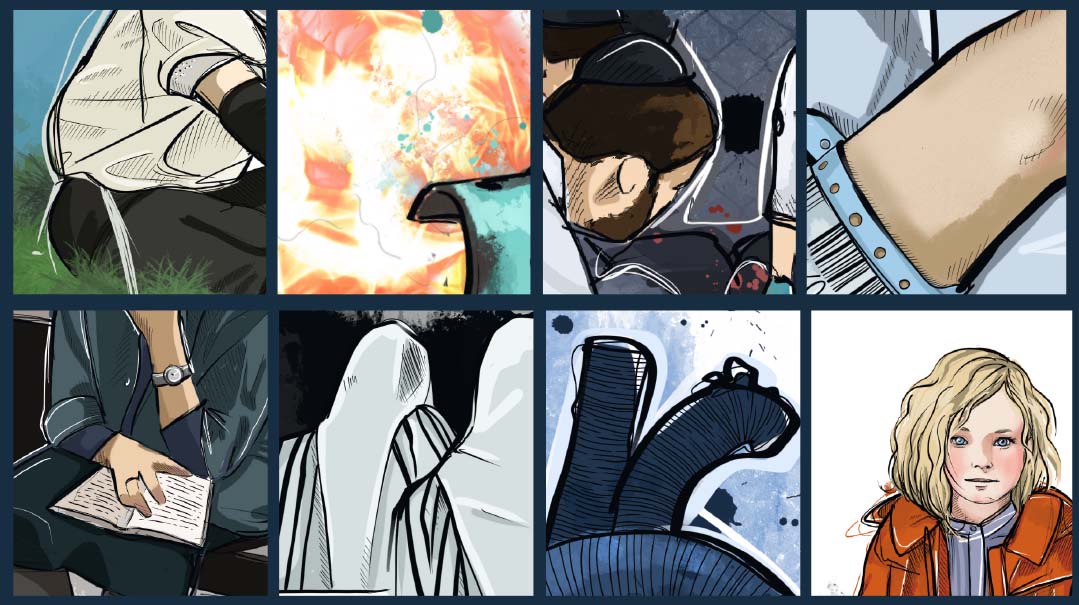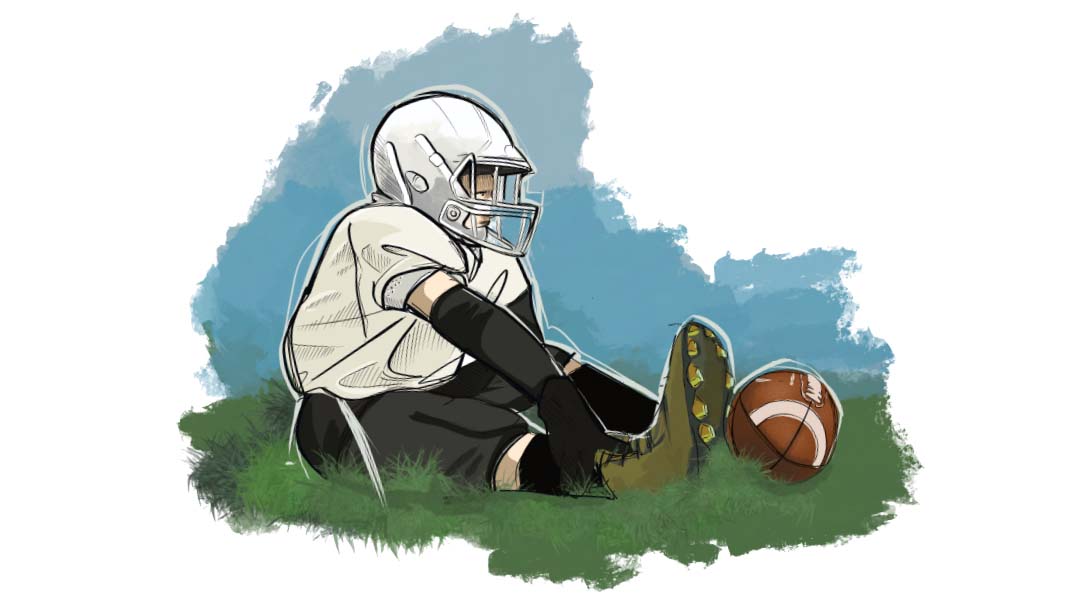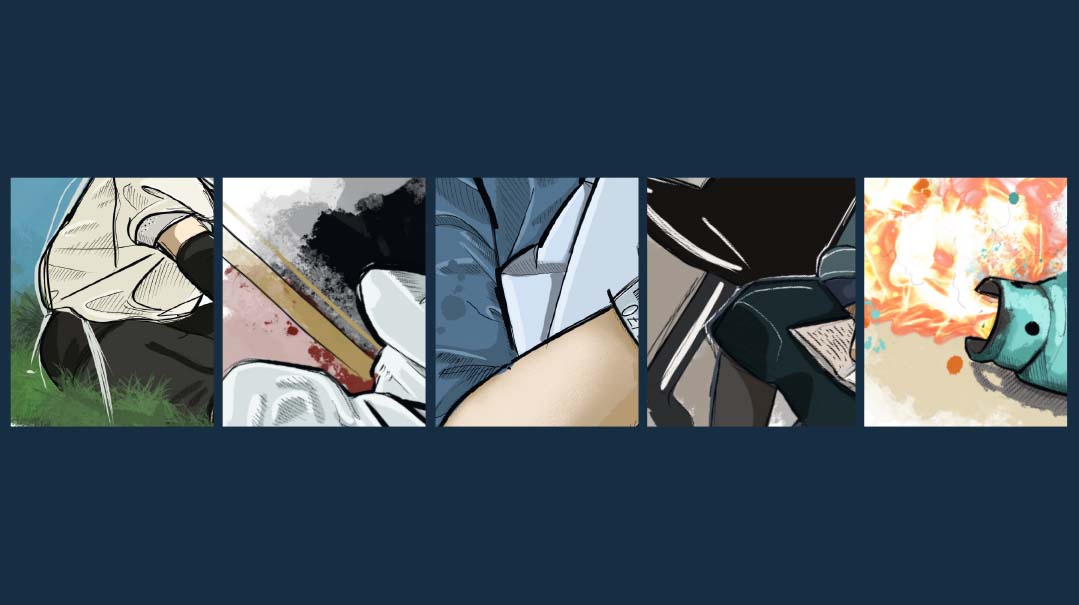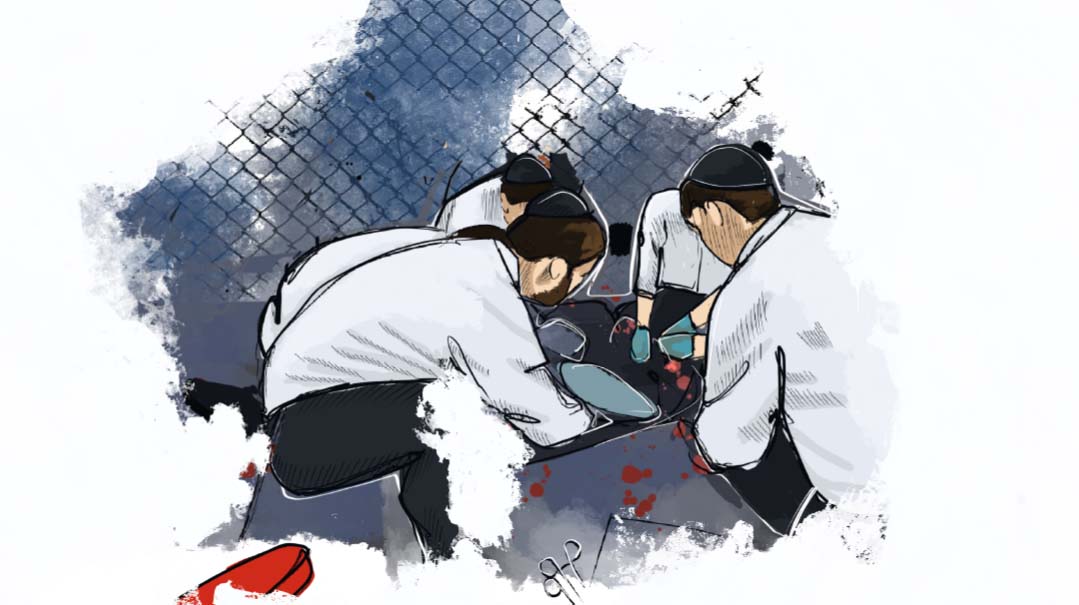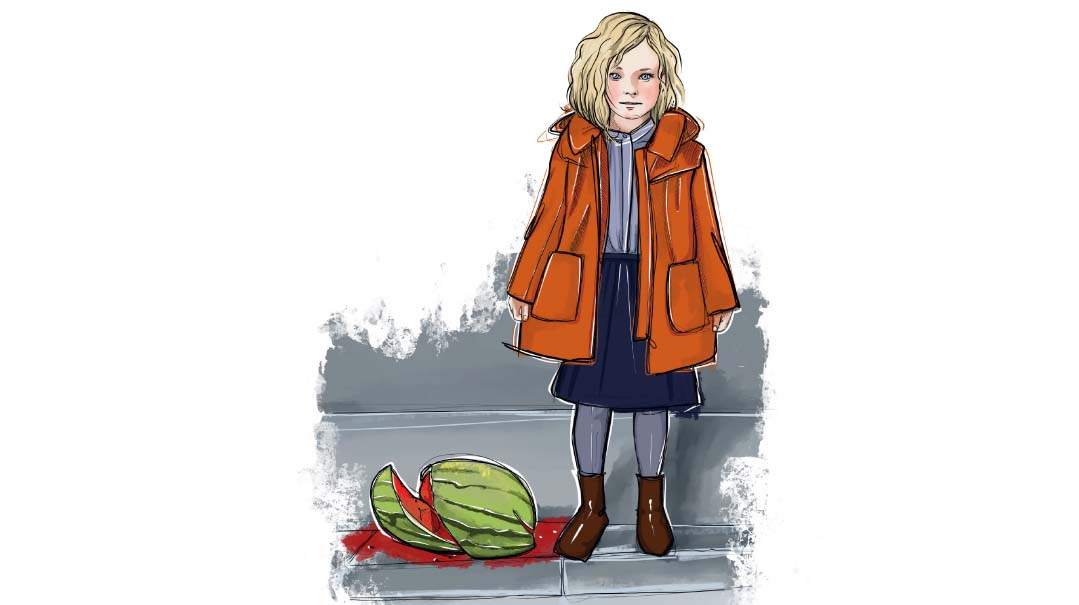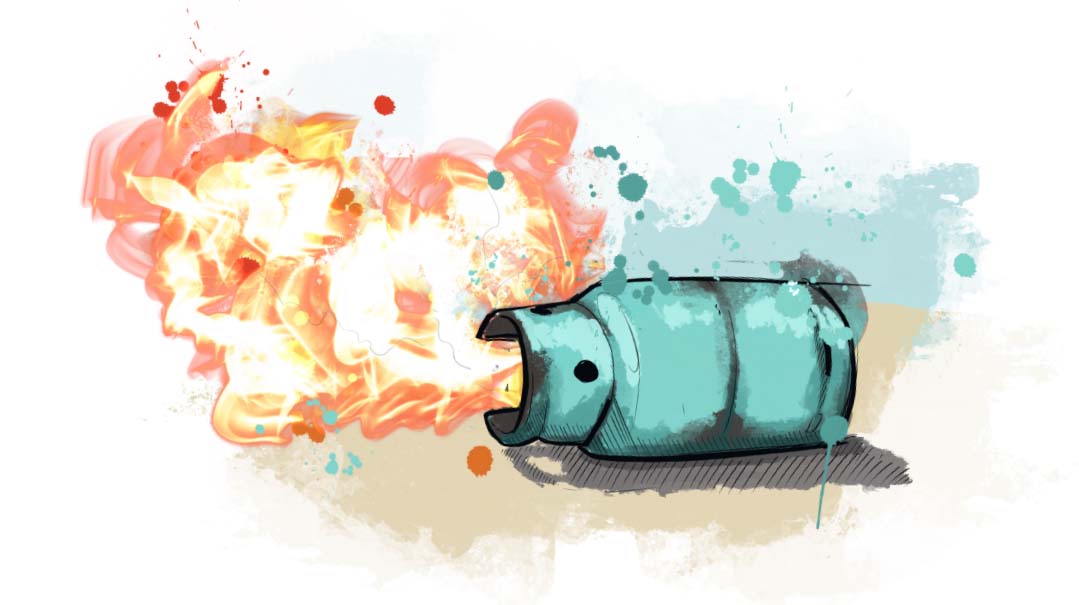Lasting Impact
| November 30, 2021“Hashem, if you save my son, I will become completely observant,” he pleaded
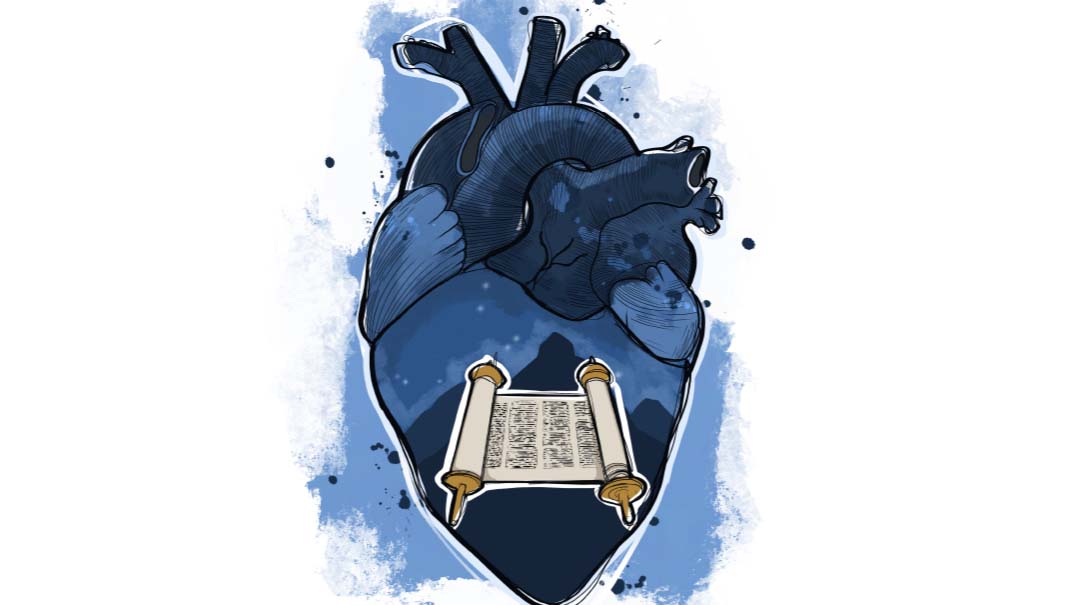
As told by Rabbi Reuven Kigel to Ilana Kielson
Oh, my goodness, I realized. My nose is literally in the wrong place
It was a clear Monday night in March 1993 when we set off — me, my high school friend Jay, and an assortment of our college friends. Another car, also with some friends, led the way from University of Michigan in Ann Arbor, where I was a sophomore, to Windsor, Ontario, an hour’s drive away.
I wasn’t religious at the time, and my exposure to Torah-true Judaism was minimal. My parents, Jewish Russian immigrants, knew little about Yiddishkeit, though over the course of the last year, my father had started moving slowly toward Torah observance.
Soon enough, we were cruising up Interstate-94, a sprawling highway with four lanes in each direction. The atmosphere was relaxed — we had all just returned from spring break, and here we were, driving along, shooting the breeze, enjoying each other’s company.
What could be better? I thought, when suddenly — Hey, what’s that?
White lights, headlights — headlights! — were making their way straight for us. I had barely registered the sight when — BOOM! CRASH! — we were hit head on.
A drunk driver had swerved across the sloped grassy area dividing the two sides of the highway and into oncoming traffic — us — at full speed.
The impact was enormous. Both cars were traveling about 60 miles an hour. You do the math. That’s a collision force of a whopping 120 miles an hour. What’s more, the driver was behind the wheel of a Ford pickup truck. Our ‘93 Honda Accord didn’t stand a chance.
The lead car pulled to the side immediately, and our friends came running to the wreck.
“When we saw the crumpled car, we said, ‘There’s no way anyone here is alive,’” one of my friends told me later.
They peered in, expecting the worst — but baruch Hashem, we had all survived. Nevertheless, we were severely injured. Driver-side airbags had recently become widespread, and the driver was mostly protected by his airbag, but he sustained serious hand injuries. Passenger airbags were not yet standard, and though my friend in the passenger’s seat had been wearing his seatbelt, it was no match for the force of impact. He sustained a traumatic brain injury and a broken back, and it took him months of surgeries and therapy to get back to himself.
And then there was me. I had been sitting directly behind the driver, and my body was hurled against the driver’s seat. My face took the brunt of it, sustaining extensive injuries: I broke my nose, both eye orbits, both cheekbones, and my jaw. Meanwhile, my leg had hit the console, breaking my femur.
But I had also sustained another injury, one I wasn’t even aware of, that dwarfed the others in comparison — because this one actually posed a threat to my life.
Someone with a cell phone — a novelty then — stopped at the scene and called for an ambulance. Meanwhile, I couldn’t move.
Oh my goodness, I realized. My nose is literally in the wrong place.
After what seemed like ages — even though it was under 15 minutes — an ambulance transported us to a small hospital near the Canadian border, one that clearly wasn’t equipped to deal with the severity of our injuries. But as “luck” would have it, one day every month, a top pulmonary specialist from the University of Michigan Medical Center would visit to advise and assist the doctors in this hospital. It was my “good fortune” that we crashed on the one day in March that Dr. Fuchs (I don’t remember his first name) was there.
“Does your chest hurt?” Dr. Fuchs asked.
“Right now, everything hurts,” I replied. (I was in so much pain, they had given me a double dose of morphine intravenously.)
He listened to my heart.
“I’m pretty sure there’s something wrong with your aorta,” he said, pulling his stethoscope out of his ears and studying my X-rays. “I’m having you choppered to the University of Michigan, stat.”
In high speed crashes, one of the cardiologists explained, internal organs can continue moving even when the body stops, causing them to collide with the rib cage. Even if someone appears to emerge from a high impact crash unscathed, medical personnel administer scans to detect organ damage. As a specialist, Dr. Fuchs could tell from one look at my X-rays that something was off with my aorta.
Next thing I knew, the helicopter was lifting off. It wasn’t long before I was at University of Michigan Medical Center.
I was terrified — and also very concerned about my parents. I am their only child, and I knew they would be frantic. They got the call from one of my friends as I was arriving at University of Michigan at about one a.m. My parents never moved so fast, racing to the airport from their home in Short Hills, New Jersey, to get on the next flight from Newark to Detroit.
Throughout the entire two-hour flight, my father davened Shacharis in Russian, wearing his tallis and tefillin.
“Hashem, if you save my son, I will become completely observant,” he pleaded.
There was no time for further reflection. As soon as they landed, my parents sped to the hospital.
Meanwhile, I was undergoing additional testing to determine the status of my aorta. I remember seeing a lot of faces, backlit by a series of overhead lamps, before I blacked out. I woke up on the operating table as the anesthesiologist was preparing me for surgery, and then I was out again.
Dr. Fuchs’s suspicions had been confirmed: I had suffered an aortic dissection, a tearing of the aorta. In 98-and-a-half percent of aortic dissections, the tear spreads completely through all three layers of the aorta, which is nearly always fatal. Baruch Hashem, in my case, only the outer and middle layers had torn. My aorta was holding up for now, but it needed immediate repair.
In the wee hours of the morning, the hospital roused the thoracic surgeon, and he performed open heart surgery, using a synthetic graft to repair my artery. By the time my parents arrived, my heart surgery was completed, and doctors had started operating on my face and leg.
“The next few hours are crucial,” someone on staff told my parents; my life still hung in the balance.
Altogether, the surgeries took more than 12 hours — a torturous wait for my parents. When I finally emerged from the OR, I was hooked up to several machines, I had a trach, and I was heavily sedated with morphine. My parents remember it being incredibly painful to witness.
At this point, it was already Tuesday evening. My parents stayed with me through the night and into the next day. Wednesday, March 10, was the turning point: I squeezed my father’s hand.
“That was the greatest moment of my life,” my father says.
Now that I’m a parent myself, I can appreciate that sentiment — and that date continues to have significance. In fact, my first son was born on March 10, 2005, and we named him Yonasan — Hashem gives — in honor of the miracle Hashem performed for me on that day.
Later, when I finally opened my eyes, I saw my parents.
I’m alive?!
They were smiling, crying, but with the breathing tubes, I couldn’t speak. The nurses gave me a pad and paper to write; my mom still has those notes. And my father stayed true to his word: From that day on, he became shomer Shabbos.
I, however, was a different story. While I was recovering, a Chabad rabbi came into my hospital room to visit.
“Hashem performed a neis for you,” he said. “Maybe you’d like to put on tefillin?”
“Why?” I replied. “If I thought putting on tefillin was the right thing to do, I’d be doing it already!”
After two weeks in the hospital, I was well enough to return home to New Jersey. At a follow-up visit with my non-Jewish cardiologist a little while later, I struggled to justify why I’d survived. He waved away my explanations.
“Son,” he said, “it was Divine Intervention.”
It’s clear to anyone who understands the medical facts — even the irreligious — that Hashem saved me that day.
After several surgeries, including titanium plates under both eye orbits, my face was put back together, and with the help of a steel rod, my femur, too, ultimately healed. I slowly recovered from my injuries, and in September, I returned to college to finish my degree.
When I graduated two years later, my father handed me a copy of the ArtScroll Chumash. As I read through it, it became clear to me that it was written by a Divine source. Though I never doubted I had lived through a miracle, it wasn’t until I realized that Hashem wrote the Torah and wanted to have a relationship with me — me! — that I began to turn my life around. I participated in the Israelite kiruv program in Eretz Yisrael, after which I moved to the Upper West Side. There, I met my wife, Devorah, at Aish NY. We were married in 1999.
Through it all, I felt like I owed Hashem something for all He had done for me, so I spent several years learning in kollel before becoming a campus rabbi for EMET Outreach in Queens, New York. Upon hearing my story, one of my rebbeim pointed out that I should make a seudas hoda’ah. On the tenth anniversary of the accident, we made our first seudah in a shul on the Upper West Side.
Every year since then, I make a seudas hoda’ah around the 17th of Adar, the day of the crash. Devorah organizes the details, and I usually make a siyum on a masechta. We host anywhere from twenty to forty guests in our home, different people every year so we can spread the story of my neis. Of course, my parents are always there — this is their neis as much as it’s mine!
The seudas hoda’ah really takes us back to the event, allowing us to experience Hashem’s kindness anew. It is a chance to thank Hashem for giving me a new lease on life as well as a spiritual rebirth, because the miracle I experienced was the catalyst for my religious transformation four years down the line. At the seudah, everyone in the family speaks about the accident from their perspective.
“As traumatic the experience was, it was worth it because it brought us to where we are today — proud observant Jews,” is my mother’s constant refrain.
I couldn’t agree more.
Rabbi Reuven Kigel is the campus director for EMET Outreach at Baruch College, Queens College, and St. John’s University in New York. He lives in Passaic, New Jersey.
(Originally featured in Mishpacha, Issue 888)
Oops! We could not locate your form.

